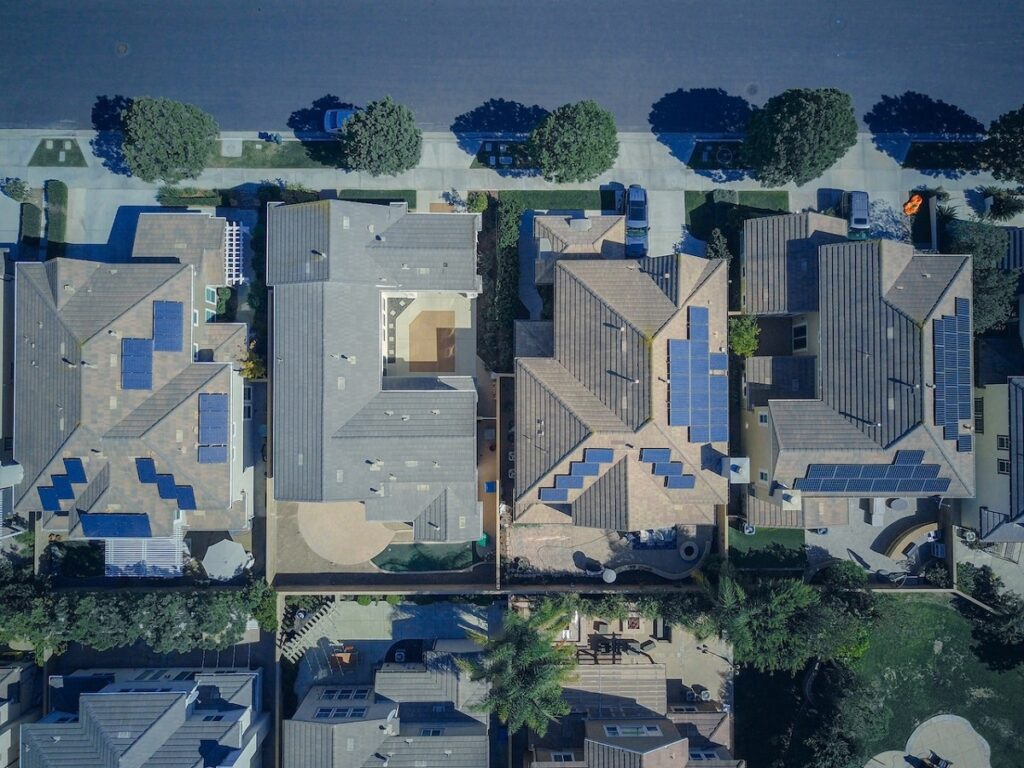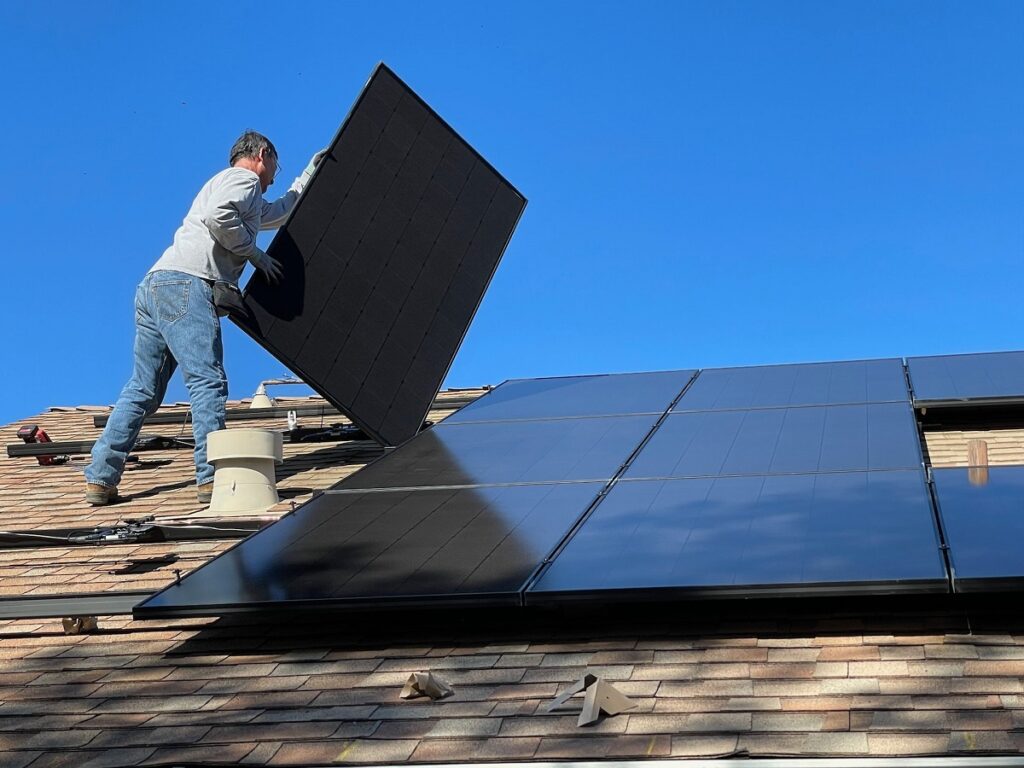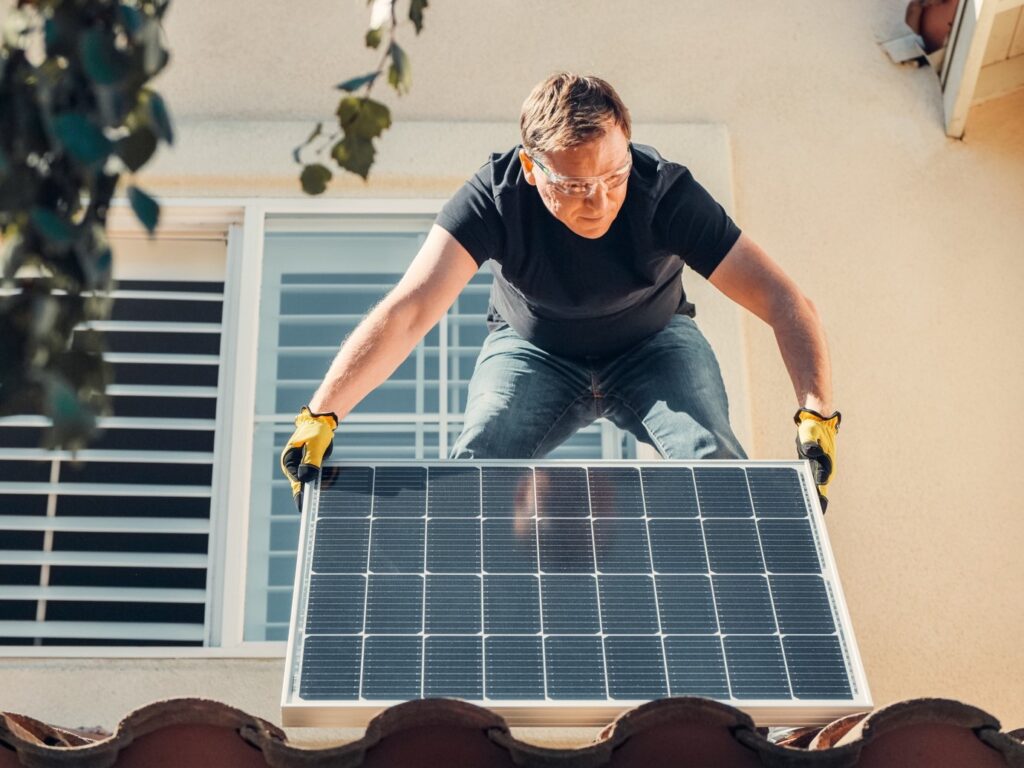Mega Solar System
How to use inverters to get past export limits. Modern inverters, such as those made by Fronius, SMA, Enphase and Solar Edge, now have an excellent new feature that allows you to throttle back your grid exports to a pre-set limit (i.e. 5kW or 10kW) or whatever your local grid export limit is.
This allows you to have a very large, grid connected, PV array and still match grid export limits set by inflexible grid operators or the somewhat conservative CEC, who would rather set export limits than innovate to allow households to export large amounts of solar power to their neighbours.
Solar panel owners Becoming more ambitious
Many solar panel system owners are becoming more and more ambitious about what they want from their PV system, somewhat like car owners ‘hotting up’ or ‘super charging’ their car engines to boost performance.
Instead of turbo charging an engine, solar panel owners are now installing 10kW + PV arrays and over-sizing their inverters, that is, putting in a PV array larger than the inverter’s nameplate capacity i.e. installing a 13.3 kW PV array on a 10kW inverter.
It is important to note that over sizing your PV array will not damage the inverter as these systems have been designed to handle this just about since solar year dot (your inverter has voltage and current limits that will allow for PV array over-sizing).
The worst that will happen is that in the middle of a very cold sunny day, when all your panels have been freshly cleaned, your 13.3 kW of DC power potential will only result in 10kW of deliverable AC power, that is, your power output will be effectively ‘clipped’ at 10kW when it could have otherwise done say 12kW. (Explanations elsewhere for why you almost never get the rated output out of a solar panel, which is normal).
Over sizing inverters
Over-sizing of inverters is becoming more commonly accepted; to achieve a subsidy the CEC allows a ratio of 133 per cent over-sizing. This is not at all the best ratio. The economic sweet spot, in-terms of return on investment (ROI), is somewhere between 150 per cent and 200 per cent over-sizing.
But, for now, the CEC (in its infinite wisdom) has decided that inverters must be oversized by no more than 133 per cent if a solar system owner wants to receive STCs.
Another rule constraining solar system owners from installing a PV system that suits their needs is, of course, the grid export limit. A grid export limit effectively puts a cap on the size of PV system that can be installed (and connected to the grid).
Their logic goes that it is too expensive to upgrade the power network to allow PV system owners to install systems beyond a certain size, as the current network can’t cope. Funny how this logic never applies to the large-scale generators or the gas network, or their ability to supply voracious users with bigger connections. But that is another story.
Enter Grid Export Limiting Inverters
As previously mentioned, a great new feature of inverters – in particular inverters from Fronius, Enphase and Solaredge – is grid limiting.
This feature causes an inverter to throttle back to a pre-set export limit to match the grid operator’s feed-in limits, neatly getting around the grid export limiting rule (where a grid operator accepts and respects this capability) and thus removing the effective limit on the size of PV arrays that can be installed.
A common example of grid export limiting today is customers that opt for 10kW solar systems but are in grid areas with a 5kW limit such as Ausnet, Citipower or Powercor in Victoria, SAPN in SA or on Endeavour or Essential in NSW.
A self-consumption meter is installed (each manufacturer has its own one) that checks the total power in and out of the site and then gives that feedback to the inverter it is controlling.
If the total power at the site approaches the grid limit then the inverter shifts the panels attached to it on its MPPT’s to a less efficient spot, reducing the output to the grid.
At 5kW export limit a 10kW panel system will lose 0% of annual production if there is a decent amount of on-site self-consumption, which is the case in many homes. In other homes you’re looking at more like a 1-6 per cent annual production reduction.
In a worst-case scenario, where everything is turned off all year round at a home (an unlikely scenario), then grid export limiting at 5kW with 10kW panels would result in about 12 or 13 per cent energy production reduction (based on Melbourne).
In the average case of, say, 5 per cent losses your $1/Watt system becomes a $1.05/Watt system – still seriously cheap solar at twice the size and bonus it allows you to install a $0.90/Watt system (as you’re delving into economies of scale so actually now you’ve got 94c/Watt solar with the fastest payback possible and you couldn’t get that before.)
The cool thing about grid expert limiting
The final very cool thing about grid export limiting is that if you have an existing inverter that’s incompatible with grid export limiting and it’s already at your export limit (i.e a 5kW growatt or samil or previous generation Fronius or SMA), you can add a 5kW Solaredge or Fronius and a smart meter and the whole system (including your old meter) will still grid export limit to 5kW.
During a potential high production time, when you’ve got no self-consumption (rare event), the Fronius or Solaredge will throttle down as low as zero to keep you within the grid export limit.
In the case of Solaredge, self consumption monitoring is not even effected as you can install 2x Solaredge self consumption meters and you will get accurate readings in the online web monitoring portal for each of your inverters (your Solaredge and your legacy inverter) as well as your own self consumption, gross imports and gross exports.
This is a great leap forward. And if grid operators thought they were going to halt the rise in rooftop solar, they are in for a shock. They have seriously underestimated the ingenuity of inverter companies.
Source: Matthew Wright


